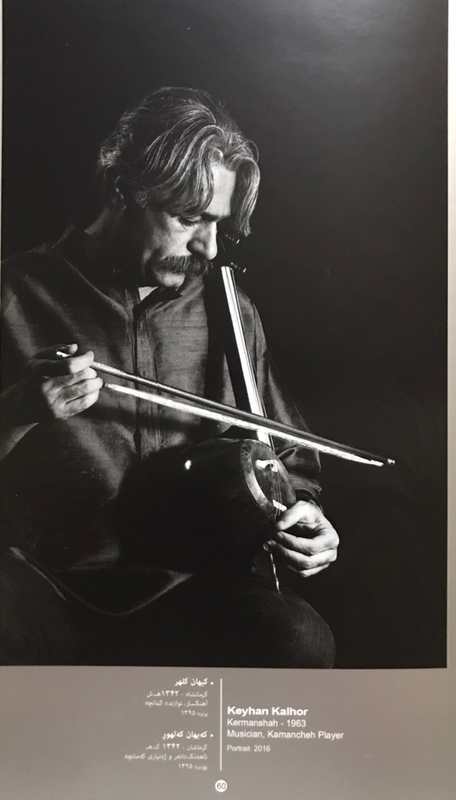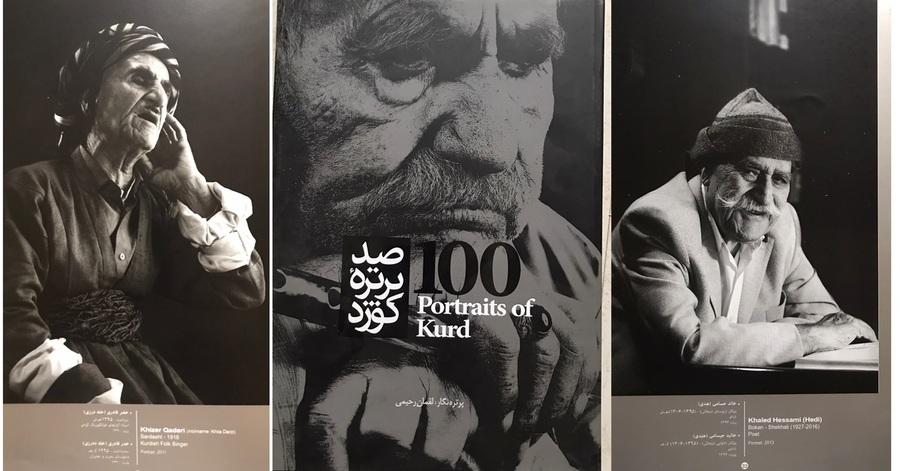Portraiture in pursuit of a different identity
The book "100 Portraits" or "Portraits of Kurdish Celebrities" is one of the books that is different from other books in terms of size and type of publication and the content and results of the work of the author and creator. The book is printed and published in a very large size on good glass paper and in a professional manner. The book contains portraits of 100 famous Kurdish personalities. Photographer Luqman Rahimi talks about his work in the same book and the introduction to the book points out the reasons for its importance. The book contains portraits of many famous writers, poets, musicians, sculptors, etc.
Both the photographer's oral and honest saying of his work and the results of his photographic work, in 100 artistic portraits, express the difficulty of the work and the importance of this collection of photographs. A collection of works that includes the years of experience of a photographer and more importantly in terms of content contains portraits of Kurdish artistic, literary, and scientific personalities from the perspective of the photographer.
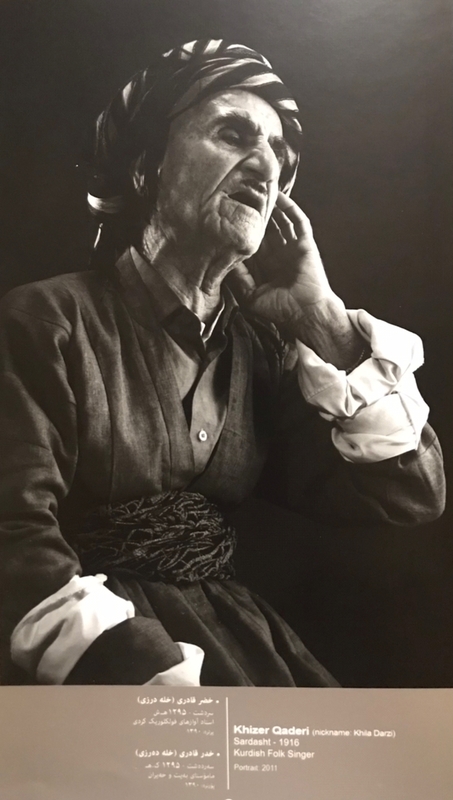
If we look at the photographer's initial narrative from the very first moment and motivation of his work, we understand that the photographer of this collection has selected a group of prominent Kurdish artists, literary, and scientific figures from East of Kurdistan whose photos are taken with a special technique and expression that characterizes the consultation of Mr. Rahimi’s camera and lens, and he has adapted it to the cover of his camera.
It is this particular expression that Elin Rantakrans calls the "photographer's signature" in her book called “The Perfect Photo”. The photographer's signature can be a look at the horizon, another signature can be the use of a fast lens without lightning, sometimes the use of a wide or tele lens can be recognized as a photographer's working method, or contrast added after shooting in software. Apart from these, the photographer's view of meanings and their reflection in the pages of his photo albums is another signature, and this direction is obviously seen in this collection. On the other hand, it has proved that photography can also be a political and social subject. Identity-seeking and distinctive subject.
Searching for famous individuals with a linguistic and ethnic identity and recording their faces in the context of an artwork; is an artistic approach to recording the images of those who, according to the photographer and their works, played a role in shaping the artistic and cultural structure of their people and thus became part of the history of a nation and are used in historical books. On the other hand, since photography is an unlimited art and does not relate to language, we can give a social and even political interpretation of these works; from the point of view that these works show the artistic, literary, etc. characteristics of a nation and emphasize a rich identity in front of the voices of other identities and The Others.
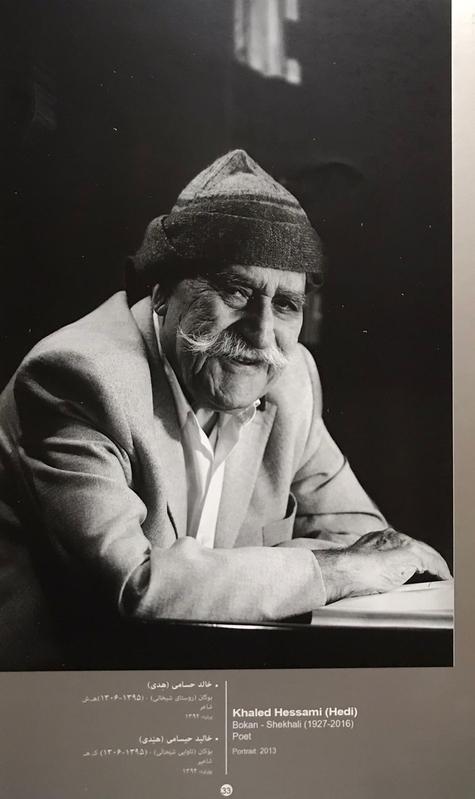
Taking such a way, as Berenice Abbott says in "Photography Must Stand on Its Own Feet", requires care and inquiry. That means the photographer's knowledge of the present, or seeing the present with such clarity that you look at the past and feel the future. That work has an amazing path and requires knowledge, awareness, and understanding of time. That is why the photographer must be completely updated. Someone whose present is connected to the past through the window of their eyes. In this book, even if the understanding of time and the foundation of contemporary identity is not presented as a theoretical subject for the photographer, the search for the meanings of such a subject according to the sense of danger of neglect of national identity is accurate.
The idea that all these portraits are part of Kurdish identity builders, artists, and cultural and social role players, can be seen from the perspective of people such as Edward Said and Homi Bhabha. While many media outlets and even ruling groups sometimes try to weaken the potential of identity or at least try to marginalize them, such a task “can be a struggle to correct the shattered and wounded face” of an identity.
Apart from that; from an artistic point of view, there is a variety of styles. A wide range of arts and abilities are evident in the faces of the photographer's chosen people. From writers, musicians, and film directors to poets, historians, translators, doctors, etc. In short, we can say that the photographer has tried to look and write differently from other portraits. It should both represent a portrait of one person and also carry a kind of defining personality through the chosen characteristics of the person photographed; materials that can express the art and work of the chosen personality. Probably, all portraits do not carry this description due to technical reasons, even the timing of the shooting and the mental state of the characters during the shooting, but the photographer's efforts in this direction have been rich and talented. Many of the portraits contain clear language and meaning and summarize the character in a frame and are beautiful artworks for the current and future generations of Iranian and Kurdish art.
Part of the Narrative of the Recording of the Portraits by Luqman Rahimi
Working with Qalamara was difficult and sometimes impossible. He had no patience, nor did he care about such work. An identity-building artist among his people, unclaimed, and oppressed. Of course, now, the same portrait that was the result of collaboration with this artist is constantly used and repeated in the Kurdish virtual environment and media.
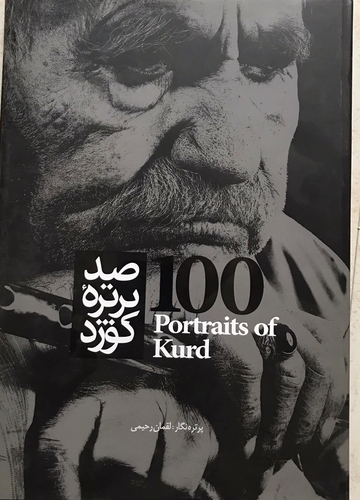
After that, I moved to other cities and followed Kurdish artists to Sina (Sanandaj), Kermanshah, Tehran, Mahabad, Saqqez, Bane, etc. In short, according to Kurdish folklore saying, I put on my iron shoes and followed the path, and went to meet many great Kurdish personalities.
A group of artists was in Tehran and each time traveling to Tehran to take portraits of artists living in the capital was very difficult. Therefore, I had to rent a house and stay in Tehran, which is the throw of Iranian culture, until the end of my work, to record the faces of famous Kurdish artists, figures of literature, translation, theater, cinema, medicine, etc.
From Sharam Nazeri, Sadiq Tarif, Behrooz Gharibpour, Ebrahim Younesi, and Ali Ashraf Darwishian to Kamkar and the Andalibis, etc. From music to medicine.
Taking portraits is difficult in a nation that has had nothing professional for many reasons. You have to be both an artist, a public relations officer, a driver, etc. You have to talk and coordinate with artists and those characters who have different and often opposing understandings and spirits. Be able to convince, so that someone who has spent their life in art, take your art seriously and consider your work artistic and trust you and your lens. In a world where millions, even billions, of artistic and non-artistic images are acquired and used daily.
The difficulty of taking portraits is not only traveling, finding a special day, finding the right angle, light, binoculars, and quality but also part of agreeing with artists who do not agree with you, of course, they are not forced to do so. But I, the portraitist, have to change the situation to catch the attention of my subject. Two examples of these difficulties are the valuable portraits of the Kamkar family who did not want to come to the photography studio or at least the necessary place to take pictures. The second example was the famous author Kalimullah Tavahodi in Khorasan, who has a long story and finally after four years, I was able to win his trust and convince him. Finally, he expressed his agreement with the sentence, “I'm stuck with someone crazier than myself. Come and take your pictures”. I went and took many of his portraits and of course, other photographs from a documentary-social work - the migration of the Kurds of Khorasan - were the result of that trip ...
